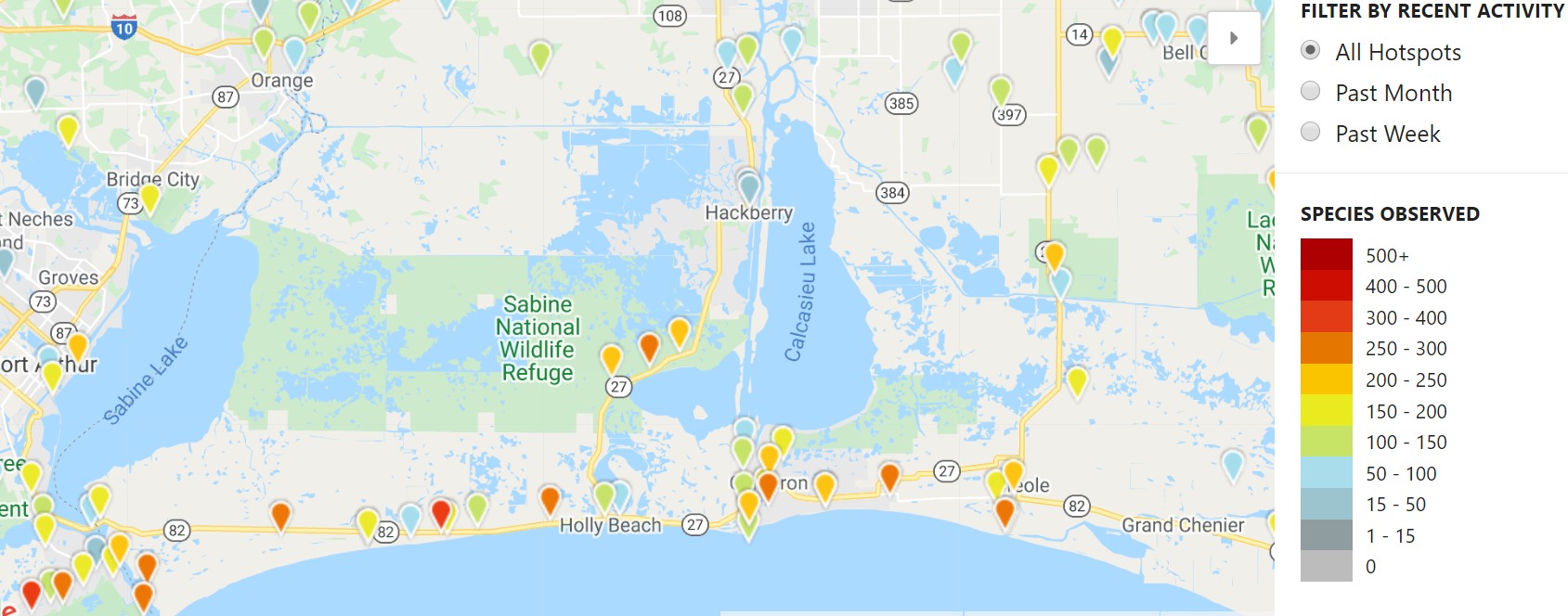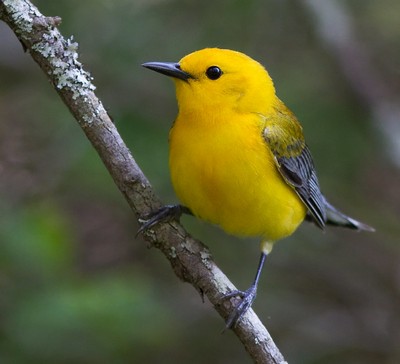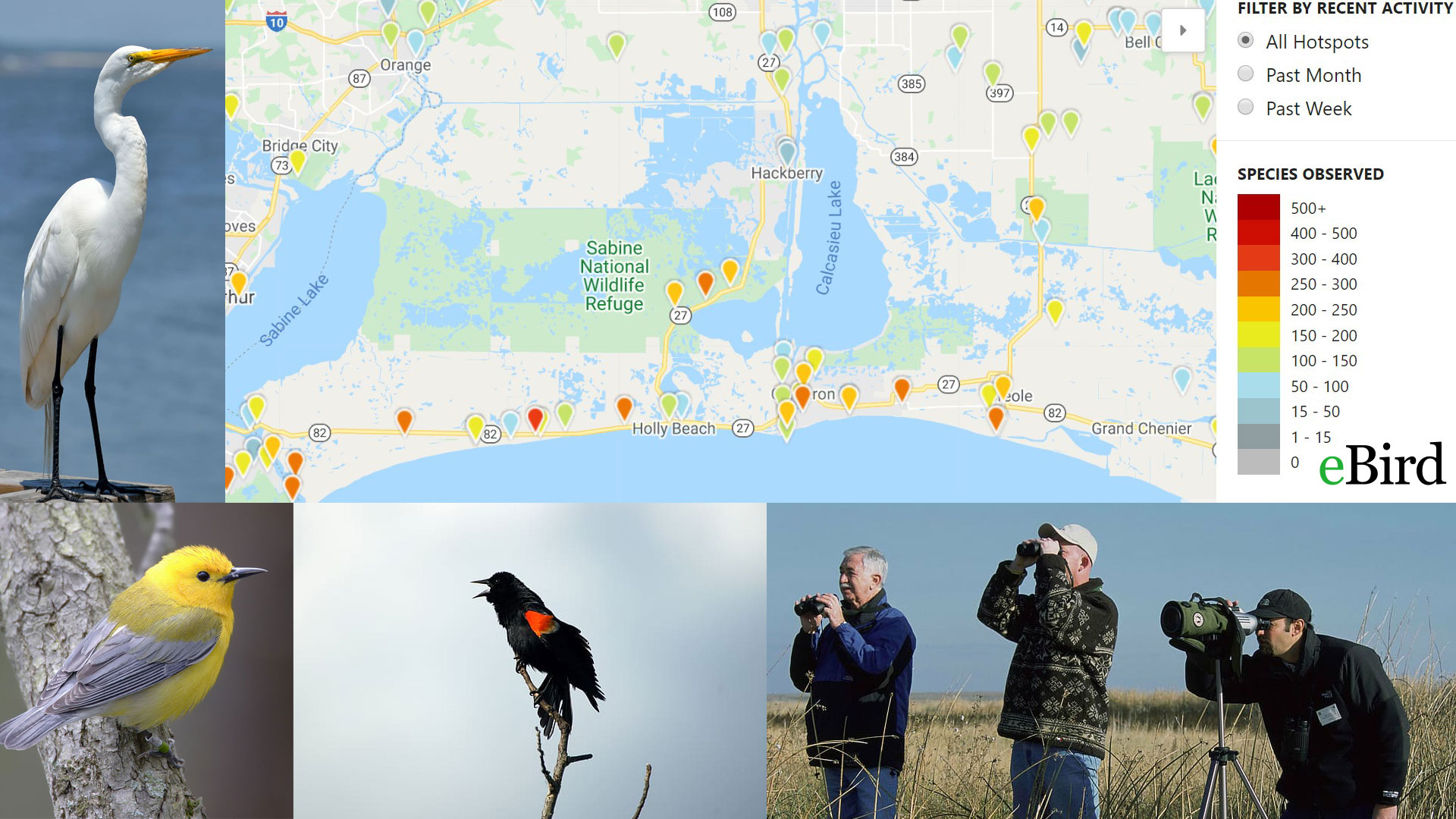Louisiana’s diverse habitats and location on the Mississippi flyway makes our state particularly rich in bird species. Many of our place-names echo this fact, recounting the time and activities of John James Audubon in St. Francisville and New Orleans, and in the surrounding fields, wetlands and woodlots seeking his subjects. The hobby of bird watching - or birding - is very popular as documented nationally by the US Fish & Wildlife Service studies, ranging from backyard feeder watchers to competitive year and life-listers who traverse the country in pursuit of rarities. Here in Louisiana the elite among these “professional” birders exceed 400 species on their list, which - generalizing somewhat - represents nearly half of the total number of species possible to see in the continental United States. Louisianans are also proud of the ornithology department at LSU which ranks among the best and provides a strong base of scientific research and resources for the public including a museum a bird office and more.
A Hobby for All
Considered a form of passive outdoor recreation, birding is easy to get into and can be enjoyed by people of all ages, all abilities, and at all levels of expertise. A basic pair of binoculars need not cost much and good places to search for birds may be as close as your neighborhood park or waterway. Many resources are available to encourage new birders or to answer ID questions including guides, phone apps, local experts or groups, Facebook groups, and LISTSRV email lists. Online resources can be very beneficial by organizing group meetings and festivals, by circulating reports of “rare bird alerts”, and by offering data tracking services. Cornell University’s ebird website and smartphone apps provide a wealth of local, state, national and even world-wide data. By accessing this data resource we lean that Cameron Parish offers the greatest diversity of species in Louisiana - possibly due to expanses of remote beaches, salt marsh and wood lots - with Plaquemines and other coastal parishes ranking highly also. But Caddo Parish is also way up there on the state’s species count list due to unique habitats attractive to western species who fly in for a visit.

Above: Hot spots in Cameron Parish courtesy of ebird.com
Timing is Important
Of those approximately 400+ bird species potentially viewable within our state many are just passing through and won’t be here long. Songbird migration begins in earnest during mid March and lasts perhaps a month. The specific timing varies by species, by gender, by age and by weather pattern. During this time, many species are returning to their summer nesting habitats in the continental US or Canada from their winter feeding grounds in Central and South America. Of course the opposite migration occurs in late summer and early fall. This is why timing and a willingness to travel are important for serious bird watchers. Several of the communication and data tracking tools listed below, along with weather forecasts, may be used to strategically plan trips to locations which may yield views of avian species you’re hoping to see. Most of these “hot spots” are publicly accessible outdoor recreation lands.

Above: Prothonotary Warbler aka Swamp Canary, credit: USFWS
Whether for science or simply enjoying the flash of colorful feathers and cheerful birdsong, the pastime of bird watching is a rewarding hobby which offers measurable economic benefit to hotspot communities and concessionaires in Louisiana.
Resources
- Louisiana Audubon Society
- Bird Louisiana Website - birdlouisiana.org
- The Cornell Lab of Ornithology’s ebird service and phone apps
- Louisiana’s Birding Trails suggested by louisianatravel.com
- LABIRD-L A listserv offering periodic emailed notifications
- Louisiana Ornithological Society
- A Birder’s Guide to Louisiana freely downloadable book
Birding Festivals in Louisiana
Due to the global coronavirus pandemic all springtime events for 2020 have been canceled. Dates listed will provide you an approximate date to watch for these festivals next year. Some are multi-day events.
- March 14, Mandeville - Great Louisiana Birdfest NorthlakeNature.org
- April 17, Grand Isle - Migratory Bird Festival
- November 4, Jennings - Yellow Rails & Rice Festival
- December Christmas Bird Counts (dates and location varies, contact a local club)
The Bird Louisiana website maintains a comprehensive list of bird-related festivals and events.
“…The environment is not just one more interest competing among many. The environment is the playing field upon which all interests compete.” – Pete Dunne, author, ornithologist
